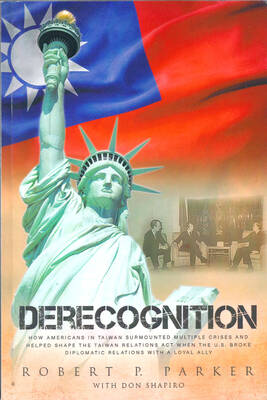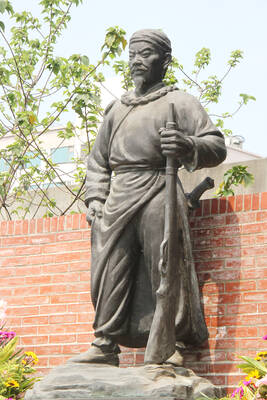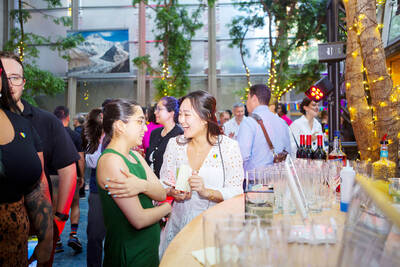In 1855, British envoy Sir John Bowring wrote, "The highways of Bangkok are not streets or roads, but the river and the canals."
Today, most of the canals in the city once known as the Venice of the East have been filled to make way for new roads, houses and shops. Those that remain present a frightening sight: animal carcasses, rusty pesticide bottles, used condoms and chunks of rotting garbage float in their thick, brown water.
"There's no question about it. Canals in Bangkok aren't dirty. They are filthy," said Vijarn Simachaya, director of the Water Quality Management Bureau in the Pollution Control Department.

PHOTO: AP
Most Bangkokians had never given a second thought to the nearly stagnant streams of sludge until a teenage pop music idol crashed his car into one on July 22, suffering minor injuries.
Unknown to him and his doctors, the foul-smelling, germ-laden water had filled his injuries, and today Apichet Kittikorncharoen is dying of a fungal brain infection.
Apichet, the 21-year-old singer of the band D2B, has been in a coma on life support for the last two weeks and doctors say his chances of survival are slim.
The tragedy has given a wake-up call to the government, long accused by environmental groups of doing little to prevent the pollution of the 20-odd canals, or klongs, that crisscross Bangkok.
A Cabinet meeting is planned next week to study a report by the Pollution Control Department, which found that all nine major canals it surveyed were ``way too dangerous for any use except public transport,'' said Vijarn.
In the middle of the 19th century, the klongs were the lifeline of Bangkok, feeding into the meandering Chao Phraya River, which bisects the city. Three quarters of the city's 400,000 inhabitants lived in floating houses on the river and the rest lived either in houses on stilts or on canal banks. The city center was the river itself.
Bowring, the British envoy, noted in his correspondence in 1855 that "boats are the universal means of conveyance and communication."
Today, the city is home to more than 10 million people. The wheeled motor vehicle is the conveyance of choice but the existing network of canals still carries hundreds of thousands of commuters on motorized wooden boats.
An enduring image of Thailand for many foreigners is the floating markets -- canals chock-a-block with wooden canoes laden with multicolored fruits and vegetables, paddled by Thai women in conical hats.
To beat Bangkok's maddening traffic, there is no better way to commute than to zip along in boats on the canals -- if you don't mind the heavy odor of sewage and the occasional splash from a swerving boat.
Waraporn Tangsukhum, 36, has suffered two serious fungi and bacterial infections on her ear and eyelids from the dirty water. She breaks out in itches from time to time.
"I can't live without the boat. It would take me three hours to get to work and another three at maximum to come home by bus. The boat takes only 40 minutes," she said. Chid Maddee, 35, a former conductor on a boat run by Family Transport Co, which carries 20,000 passengers a day, says he also suffered skin problems regularly though staff are allowed to shower at one of the stops on the route. But the worst sufferers are the drivers, he says.
"Boat drivers have the worst luck. They have to dive into the water to remove garbage from the propeller every day," he said.
Studies by the Bangkok Administration and the Pollution Control Department showed that bacteria contamination in all waterways exceeds the permissible limit by 75 to 400 times.
Bangkok produces 2.5 million cubic meters of liquid waste a day but only 1.5 million cubic meters are treated. The rest is discharged directly into the public waterways. Households in Bangkok are responsible for 75 percent of the water pollution, and less than 2 percent of the households are connected to sewage networks.
"Speaking of the problem gives me a headache, frankly," said Vijarn, the pollution control official.

One of the biggest sore spots in Taiwan’s historical friendship with the US came in 1979 when US president Jimmy Carter broke off formal diplomatic relations with Taiwan’s Republic of China (ROC) government so that the US could establish relations with the People’s Republic of China (PRC). Taiwan’s derecognition came purely at China’s insistence, and the US took the deal. Retired American diplomat John Tkacik, who for almost decade surrounding that schism, from 1974 to 1982, worked in embassies in Taipei and Beijing and at the Taiwan Desk in Washington DC, recently argued in the Taipei Times that “President Carter’s derecognition

This year will go down in the history books. Taiwan faces enormous turmoil and uncertainty in the coming months. Which political parties are in a good position to handle big changes? All of the main parties are beset with challenges. Taking stock, this column examined the Taiwan People’s Party (TPP) (“Huang Kuo-chang’s choking the life out of the TPP,” May 28, page 12), the Democratic Progressive Party (DPP) (“Challenges amid choppy waters for the DPP,” June 14, page 12) and the Chinese Nationalist Party (KMT) (“KMT struggles to seize opportunities as ‘interesting times’ loom,” June 20, page 11). Times like these can

JUNE 30 to JULY 6 After being routed by the Japanese in the bloody battle of Baguashan (八卦山), Hsu Hsiang (徐驤) and a handful of surviving Hakka fighters sped toward Tainan. There, he would meet with Liu Yung-fu (劉永福), leader of the Black Flag Army who had assumed control of the resisting Republic of Formosa after its president and vice-president fled to China. Hsu, who had been fighting non-stop for over two months from Taoyuan to Changhua, was reportedly injured and exhausted. As the story goes, Liu advised that Hsu take shelter in China to recover and regroup, but Hsu steadfastly

You can tell a lot about a generation from the contents of their cool box: nowadays the barbecue ice bucket is likely to be filled with hard seltzers, non-alcoholic beers and fluorescent BuzzBallz — a particular favorite among Gen Z. Two decades ago, it was WKD, Bacardi Breezers and the odd Smirnoff Ice bobbing in a puddle of melted ice. And while nostalgia may have brought back some alcopops, the new wave of ready-to-drink (RTD) options look and taste noticeably different. It is not just the drinks that have changed, but drinking habits too, driven in part by more health-conscious consumers and